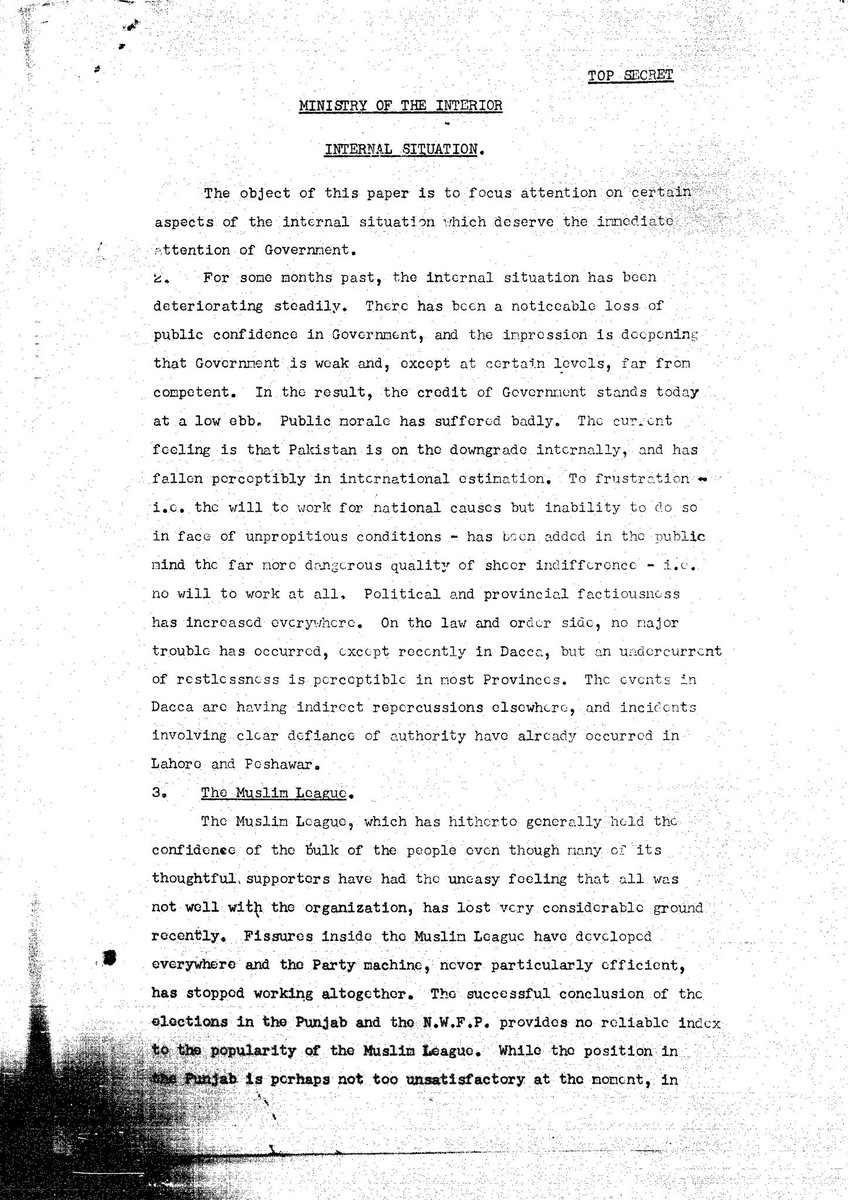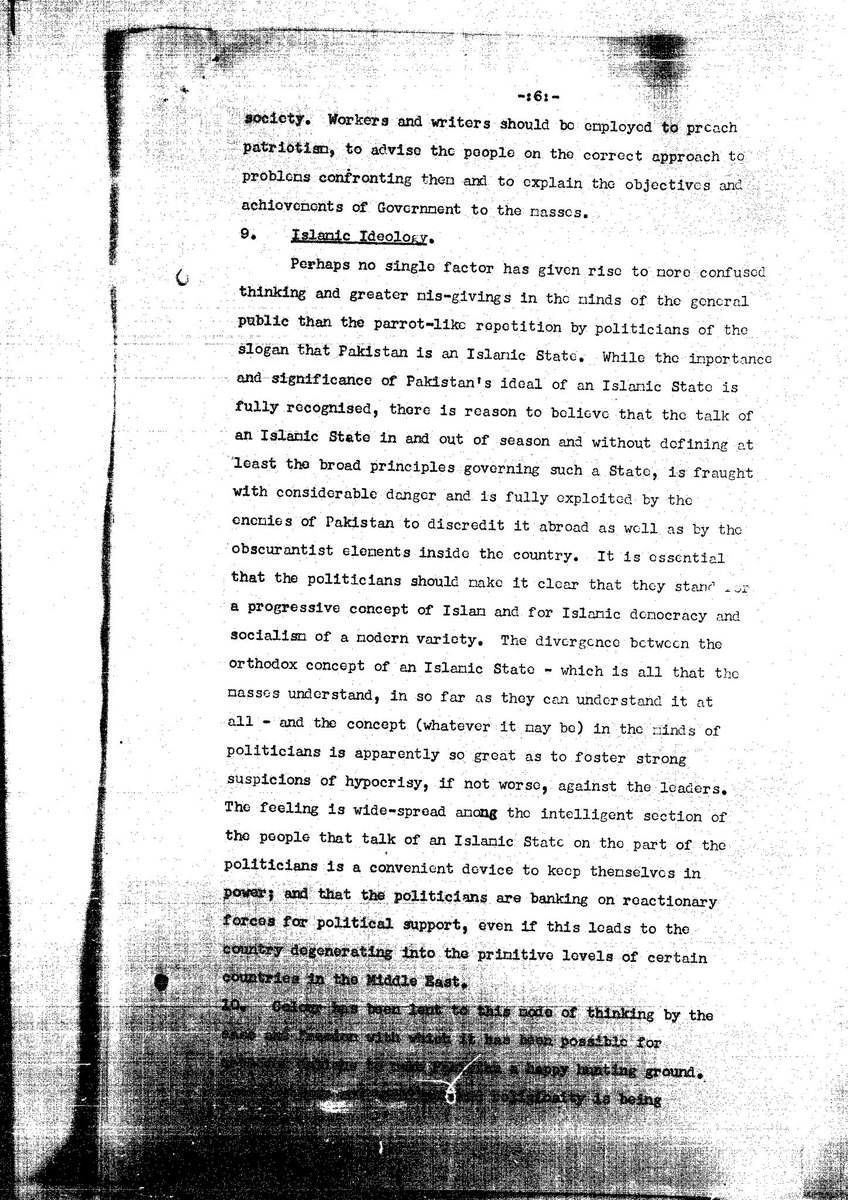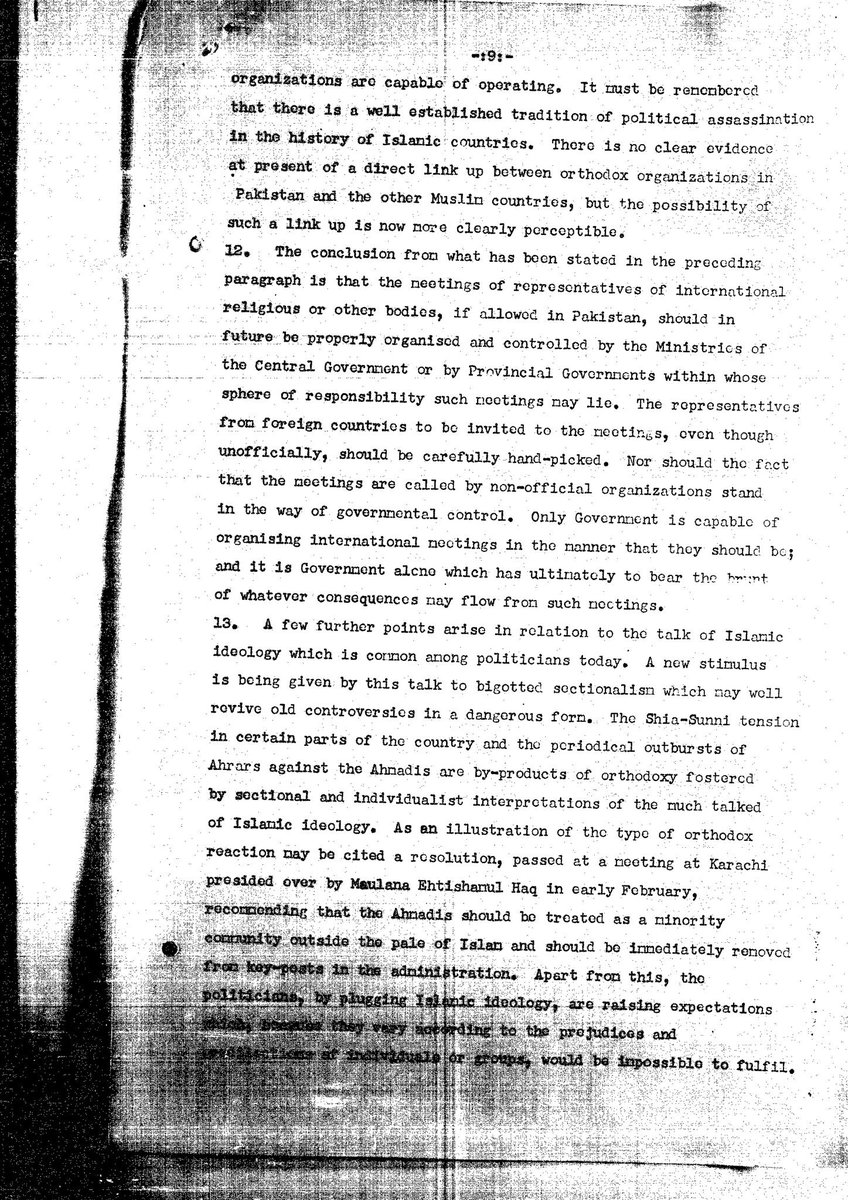1. One of the more interesting documents I& #39;ve looked at in the archives is this & #39;Top Secret& #39; report on Pakistan& #39;s internal situation produced by the Interior Ministry in 1952. The document discusses several & #39;threats& #39; to Pakistan& #39;s security at the time.
2. These threats were & #39;political factionalism& #39;, & #39;communism& #39;, & #39;provincialism& #39;, and & #39;Islamic Ideology& #39;. That the state would see these things as problems make sense in the context of what was happening in 1952, but it is amazing how little some things have changed.
3. & #39;Factionalism& #39; was a reference to in-fighting amongst the Muslim League that had brought down two Punjab governments. The cause was obvious; leaders - all stalwarts of the independence movement - seeking greater power were constantly undermining each other.
4. & #39;Communism& #39; as a threat is self-evident. The Cold War was at its peak and Pakistan had already begun to align itself with the USA. Events like the Rawalpindi conspiracy case only heightened the state& #39;s paranoia.
5. & #39;Provincialism& #39;, then as now, captured the state& #39;s fear of ethno-national sentiment. In 1952, Bengali opposition to the status quo had begun to emerge amidst the belief that the state was being dominated by an exploitative Punjabi (and Mohajir) elite.
6. As events would later go on to show, Bengali concerns were not unfounded, and the state& #39;s response - increasing repression and constitutional engineering aimed at marginalizing East Pakistan - was ultimately self-defeating.
7. Perhaps the most surprising threat the document describes, however, is & #39;Islamic Ideology& #39;. By 1952, anti-Ahmadi sentiment had begun to manifest itself with some Islamist groups using the issue to pressurize the state.
8. Moreover, there was a concern that, & #39;talk of an Islamic state... is fraught with considerable danger and is fully exploited by the enemies of Pakistan to discredit it abroad as well as by the obscurantist elements inside the country& #39;. The report also recognised that...
9. & #39;Talk of an Islamic State by politicians is a convenient device to keep themselves in power, and that the politicians are banking on reactionary forces for politicial support& #39;. The report would go on to list how Islam was being used by different actors for political gain.
10. The report& #39;s proposed solution was greater state control of the Islamic narrative and organizations. If Islam was going to be a part of political life in Pakistan, it would be in line with a vision of Islam articulated by the state.
11. In 1952, the argument was that controlling Islam would allow the state to better manipulate it as a political tool, particularly in terms of using it as a legitimating ideology. More importantly, it ensured that rival groups would not be able to use it against the state.
12. It could be argued that what we see today is the outcome of such thinking. Islam permeates public life in Pakistan and is central to how the state defines itself and national identity. Paranoia about groups using Islam against the state has led the state to use Islam itself.
13. The fallout from this - the persecution of minorities,the cultivation of Islamist proxies etc - is clear to see. That the state uses Islam for its own political gain is also obvious. Witness, for instance, the rhetoric around Zia& #39;s Islamization and IK& #39;s & #39;riyasat-i-Madina& #39;
14. It is also clear that the lessons of history have not been learnt. The response to all the threats listed above was greater repression and government control. It backfired then, just as it continues to backfire now. The issues are the same, as is the response and the results.
15. Those interested can find this andnother documents at the National Documentation Centre in Islamabad. I also suggest you look at this excellent paper by @malik_anushay on this and related issues. https://www.tandfonline.com/doi/abs/10.1080/19472498.2013.824681">https://www.tandfonline.com/doi/abs/1...

 Read on Twitter
Read on Twitter




